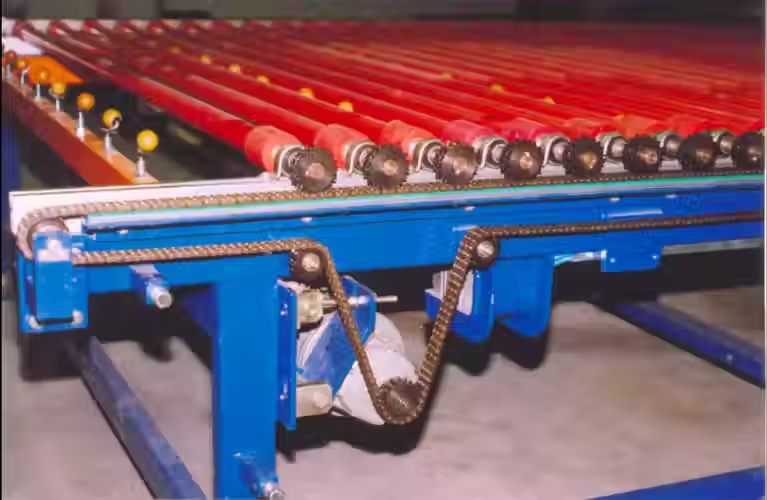Vibratory Bowl Feeder Manufacturers in Bangalore
- Jaswanth srinivas
- Oct 26, 2024
- 3 min read
Vibratory Bowl Feeder Manufacturers in Bangalore
A Vibratory Bowl Feeder Manufacturers in Bangalore is a versatile and efficient automation tool used in manufacturing and assembly processes to align, sort, and convey various parts and components in a precise and organized manner. These feeders are instrumental in handling small to medium-sized parts, making them ideal for industries like automotive, electronics, pharmaceuticals, consumer goods, and more. By automating part orientation and feeding, vibratory bowl feeders help optimize production lines, increase productivity, and reduce manual labor.
Working Principle
The operation of a vibratory bowl feeder is based on the principles of vibration. A bowl, typically circular, is mounted on a vibrating base that uses electromagnets or springs to generate controlled vibrations. These vibrations are set at specific frequencies to create a helical motion along the bowl’s rim, propelling parts upwards and outwards along a track. As components move along the track, they are oriented in a specific direction, usually dictated by custom-designed tooling within the bowl.
When powered, the vibrations move parts up the spiral track in a consistent, controlled manner. Gravity and friction allow the feeder to handle various part shapes and sizes. The amplitude and frequency of the vibration can be adjusted to achieve desired speeds and orientations, ensuring consistent output.
Components and Design
A typical vibratory bowl feeder includes the following components:
Bowl: This is the part-holding container, which is often circular and features a spiral track along its inner wall. The bowl is usually made from stainless steel for durability and corrosion resistance.
Base Drive: This contains the vibratory mechanism, typically powered by electromagnets, to create consistent vibrations for part movement. The base is usually adjustable to modify vibration strength and speed.
Controller: The controller regulates the bowl’s vibration frequency and amplitude, adjusting it to ensure smooth part flow and prevent jamming or misalignment.
Discharge Track: This is the final part of the feeder, where sorted parts exit for further handling, such as assembly, inspection, or packaging.
Tooling: Custom tooling is incorporated inside the bowl, designed specifically to manipulate parts along the track to achieve the desired orientation.
Applications
Vibratory bowl feeders are essential for applications where precise part orientation is required. They are commonly used in:
Automotive industry: Feeding small parts like screws, washers, and nuts for assembly lines.
Electronics industry: Sorting components such as capacitors, resistors, and connectors.
Pharmaceutical industry: Handling tablets, capsules, or other medication parts.
Packaging industry: Organizing items such as lids, caps, or containers.
Advantages
Automation Efficiency: They automate repetitive tasks, reducing manual handling and labor costs.
Versatility: Vibratory feeders can handle a wide range of part sizes and shapes, often in the same bowl.
Customization: Tooling within the bowl can be designed to match specific part orientation needs.
Precision and Reliability: By controlling feed rates and part alignment, they increase accuracy in downstream processes.
Durability: Built from durable materials, these feeders are designed for extended use in industrial environments.
Limitations
While vibratory bowl feeders offer many benefits, they also have some limitations:
Noise Levels: The vibrations can create noise, which might require soundproofing in noise-sensitive areas.
Initial Setup Cost: Custom tooling and setup can be costly.
Space Requirements: Depending on the part size and quantity, they can require significant space.
Part Fragility: Fragile parts may be damaged due to the vibratory action.
Future Trends
Advancements in technology are driving innovations in vibratory bowl feeders, making them smarter and more adaptive. Integration with IoT (Internet of Things) and AI (Artificial Intelligence) systems allows for real-time monitoring, predictive maintenance, and feedback on performance, minimizing downtime and maximizing efficiency. Additionally, energy-efficient designs and quieter mechanisms are becoming more common, addressing some of the traditional limitations of these feeders.
Conclusion
Vibratory bowl feeders remain an essential part of modern manufacturing. They streamline the production process by automating the alignment and transportation of small parts, ensuring efficient workflow in various industries. With ongoing advancements, these feeders continue to evolve, offering even more precision, customization, and efficiency to meet the demands of high-speed production environments.




Comments